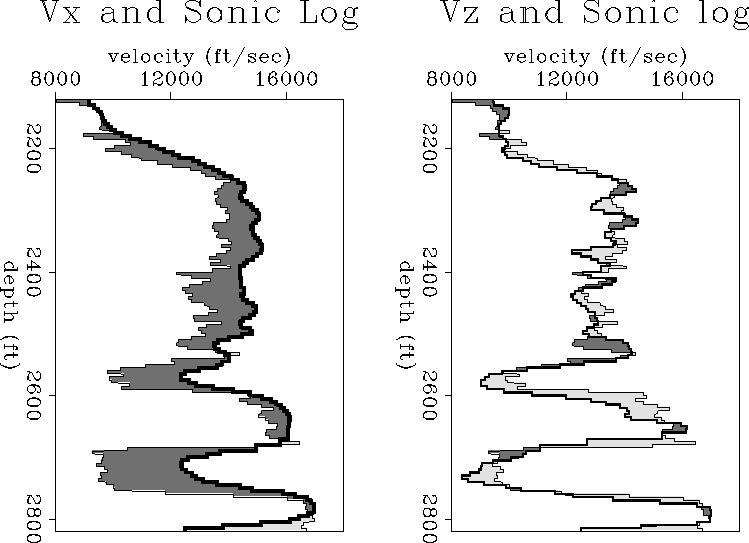




Next: ACKNOWLEDGMENTS
Up: Michelena: Anisotropic tomography
Previous: FIELD DATA EXAMPLE
A tomographic inversion technique that fits
seismic traveltimes with
elliptical
velocity functions has been presented. The elliptical
parameters estimated with this inversion can be inserted into the double
elliptic approximation to estimate more general transversely isotropic
models, when data from different geometries is used.
Since the inclination of the axis of symmetry is also a
variable in the inversion procedure,
certain types of azimuthally anisotropic
media can be approximated, in particular those formed by
dipping
transversely isotropic layers.
devine-log-vel
Figure 10 Result of the inversion.
An average sonic log (thinner curve)
blocked every 7 ft
is compared with the two estimated
velocities.
The vertical velocity
is closer and better correlated to the log. Notice how the
amount of anisotropy changes through the model, reaching a peak
at the shale and clay intervals. The model is described by 128 layers.

The model for heterogeneities is described as a superposition
of homogeneous orthogonal regions whose boundaries may change their
positions
as iterations proceed
but are not allowed to cross in the area of interest.
When two parallel interfaces move too close to each
other, one of them (along with its upper interval) is eliminated
from the inversion, reducing the number
of unknowns.
The technique was successfully applied to synthetic and field data
where both strong anisotropy and strong velocity contrasts were
present.





Next: ACKNOWLEDGMENTS
Up: Michelena: Anisotropic tomography
Previous: FIELD DATA EXAMPLE
Stanford Exploration Project
11/18/1997
